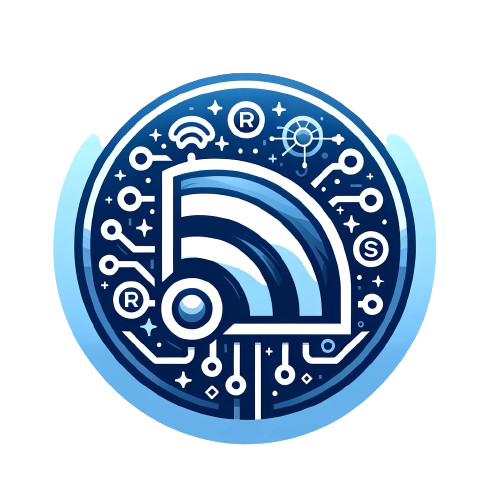The End of the Future–
Each new day’s worth of Links is a testimony to the fact that we’re stuck as a society, unable to mount any serious effort at tackling any of our growing list of problems, seemingly riding helplessly on a train headed for a nasty derailment. There may be some answers as to why we’re impotent in labor historian Steve Fraser’s “The End of the Future,” and a nice companion/comparison piece, “Secularization Comes for the Religion of Technology,” by Michael Sacasas.
Whence came this paralysis? Fraser points the finger at Neoliberalism:
Liberalism, as it morphed into neoliberalism, had betrayed itself by abandoning the future. As Christopher Lasch pointed out decades ago, this entailed giving up on its own humanist tradition, its point d’honneur and the basis of its legitimacy in favor of an ill-kept promise to deliver the goods. [echoes of Thomas Frank, who personalized it] It had become its own refutation; at once cheering on an extremist individualism, wreaking havoc here, there, and everywhere in the name of freedom, while simultaneously bemoaning the loss of community and the family that its own imperatives made inevitable.
Sacasas looks deeper into the dominant worldview in this age to find the source in the “secularization” of the dominant religion of our time–no, not Christianity, already secularized more than a century ago–but instead, the religion of technology. And though the term is not mentioned by Sacasas, Neoliberalism has played a role:
[T]he religion of technology was effectively incorporated. American corporations presented themselves as the builders of the techno-utopian city. With the cooperation of government agencies, the corporations would wield the breathtaking power of technology to create a perfect, rationally planned and yet democratic consumer society. Thus was the religion of technology enlisted by the marketing departments of American corporations.
But a “consumer society” is one bereft of meaning beyond “the one who dies with the most toys wins.” It has left us adrift:
Perhaps most importantly, however, I would argue that the religion of technology was always fundamentally unstable. Technology is a means to an end. The moment it became an end in itself, that is to say, the moment technology became the dominant partner in the religion of technology and took up the role of civil religion, at that moment our present moment became inevitable. When the religion of technology drives a culture, that culture, to riff on Thoreau, will eventually find itself directionless, with improved, and sometimes barely improved or even unimproved, means to nonexistent ends. It will eventually find itself fruitlessly focused on the incremental optimization of quantifiable measures of little consequence. It will eventually find itself in a crisis of meaning and characterized by various degrees of alienation and polarization.
When did our malaise begin? Focused on the “religion of technology,” Sacasas points to 1939 as both the apotheosis of techno-faith and the beginning of its secularization:
The theme of the 1939 New York fair was the “World of Tomorrow.” During its two seasons in 1939 and 1940, the fair drew 45 million visitors, which, as Nye notes, even allowing for repeat visitors, constitutes a large percentage of the total population. The exuberance and confidence that characterized this fair, the scope of its vision for the future, the way it compelled the imagination of the public, and how it wielded the barely questioned (yea even religious) authority of science and technology harnessed by government and industry now strikes us as completely unfathomable. It was another world under the sway of a different religious imagination. The utter earnestness of the whole affair is almost cartoonish. To perceive as much is to observe the effects of secularization come for the religion of technology.
Since that high tide, Sarcasas says our society’s faith in technology has been shaken by the Bomb, discomfort with the idea that humans must conform and adapt to whatever technology thrusts upon us and the devolution of mighty Progress to mere Innovation. We’re left adrift and without the glue our society needs to hold together:
The religion of technology no longer commands the kind of assent it once did, it no longer animates cultural creativity, nor does it bind a diverse society together under a collective vision for the future. It neither compels nor inspires. It rose to dominance, brought the whole scope of human affairs under its purview, sealed us off from competing sources of meaning, purpose, and value, and then simply exhausted itself leaving a cultural vacuum in its absence.
It’s hard to argue with Sacasas on this point. While there remain many true believers in the religion of technology as Sacasas readily admits, the kind of consensus about technology and the future has crumbled along with trust in Science. Liberals shaking their fingers at skeptics and accusing them of being Luddites, Fundamentalists or conspiracy theorists has only accelerated the secularization process.
But my heart tells me that it’s my fellow Boomer Fraser who is onto something when he says that the Future ended back in our youth:
So the future beckoned. However, the New Left and the wider cultural universe in which it was nurtured was by no means revolutionary, or even socialist, by and large. Still, it felt compelled to imagine some kind of alternative to the bureaucratic-administrative welfare and warfare state, to its apartheid at home and imperialism abroad. Liberalism, and not just Cold War liberalism, was its enemy. Liberalism was not merely an ideology, but a way of life whose understructure was corporate capitalism. (How starkly different from the way things are now, when much of the putative left has spent years defending liberalism, in various forms, from the onslaughts of the Right).
Fraser places part of the blame for the failure of the hippies to persuade us to change course on the Boomer generation itself:
Capitalism won. Even if one grants that upstart “boomers” envisioned a new way, it was a frail one, evanescent, and too enmeshed in the webs of competitive individualism and consumer culture that sustained the prevailing order. Capitalism had helped invent the future. Then it killed it.
My takeaway from these two pieces is that there is no going back to the past either for those whose model is “Little House on the Prairie” or for those admirers of the New Deal. Both those worlds, especially as mythified in our imaginations, are too far removed from our realities. Christianity is now more a schismogenetic reaction to the dark vision for humanity and the planet harbored in Silicon Valley and large parts of the academy than it is a real religion still capable of widely shaping worldviews in the West. The New Deal was built on the backs of community organizations and unions that are mere shadows of themselves if they continue to exist at all.
Only a new worldview is capable of delivering us from our anomie. There are now at least hundreds of people endeavoring to envision that new paradigm, that new identity for humans, but who knows what its ultimate source will be. Perhaps some community already in existence will demonstrate the power and utility of that new worldview. Maybe a new prophet will arise, not of YHWH or Mammon, bearing a vision of a new Future and a new Human. For now, as many have noted before, we’re in that painful In Between Time, waiting for a New World to be born.





